1.The Cloisters
Tucked in the northwest end of Manhattan is The Cloisters. This building was built in the Medieval architectural style and it is home to some lovely sculptures and paintings.
The Cloisters will make you feel like you’ve traveled over to Europe as it is a peaceful retreat from Manhattan’s busy streets.
Located in Fort Tyron Park, it is actually a branch of the Metropolitan Museum of Art home to over 5000 pieces of exhibiting art, artifacts and architecture from Medieval Europe.
Constructed from parts of European monasteries and abbeys that were shipped to New York, The Cloisters’ architecture is as impressive as the art it contains. The cloistered gardens, arcaded walkways, and Romanesque chapels create an atmosphere of historical authenticity and tranquility. It’s a rare opportunity to experience medieval architecture without leaving the United States.
Perched on a hill overlooking the Hudson River, The Cloisters offers breathtaking views. The surrounding Fort Tryon Park, with its lush greenery and winding paths, enhances the sense of escape. The museum’s gardens, modeled after those found in medieval monasteries, are meticulously maintained.
Tips for Visitors
Take a Guided Tour: Guided tours are available and highly recommended for gaining deeper insights into the collection and architecture.
Explore the Gardens: Don’t miss the chance to stroll through the medieval gardens, which are beautifully designed and meticulously maintained.
Check the Schedule: Look up any special exhibitions or programs happening during your visit to make the most of your time at The Cloisters.
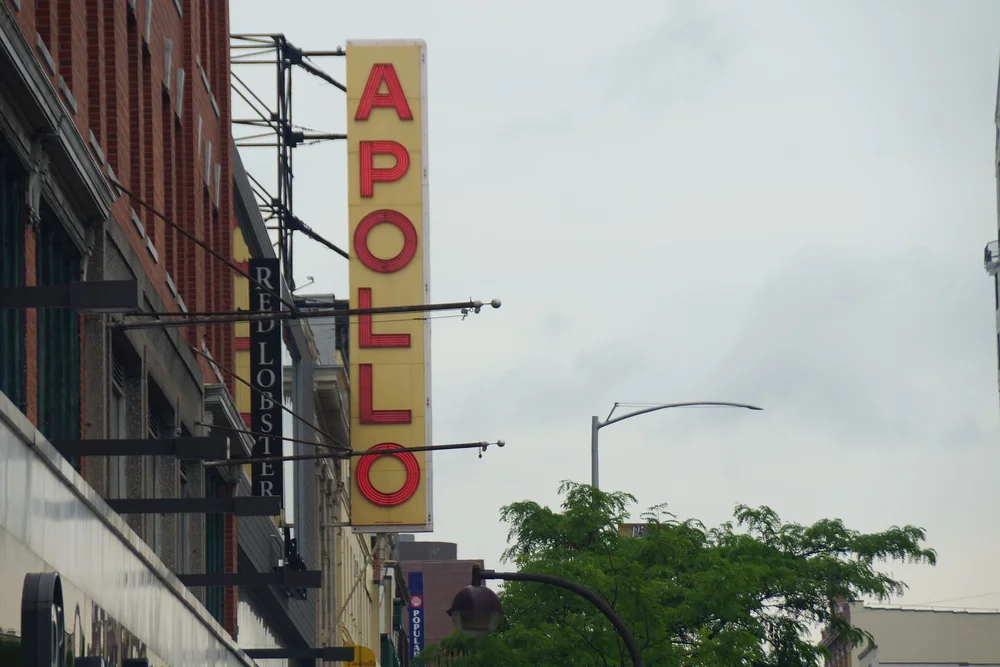
2.Harlem’s Apollo Theatre
The Apollo Theater is one of the most famous music halls in New York City located at 253 West 125th street in Harlem. Its halls have opened for many famous performers over the year and it is a noted venue for African-American performers attracting 1.3 million visitors annually. Amateur Night is on Wednesdays, and it’s great for spotting upcoming talent.
The Apollo Theater has a storied past that dates back to 1934. It has played a pivotal role in the careers of countless artists, including Ella Fitzgerald, James Brown, and Michael Jackson. The theater is a historic landmark, reflecting the cultural evolution of Harlem and its impact on American music. Visiting the Apollo allows you to walk in the footsteps of legends.
The Apollo Theater is easily accessible by public transportation. The 2 and 3 trains stop at 125th Street, just a short walk from the theater.
Tips for Visitors
- Book Tickets in Advance: Popular events, especially Amateur Night, can sell out quickly, so it’s a good idea to book your tickets in advance.
- Explore Harlem: Take some time to explore the surrounding neighborhood of Harlem, which offers a rich array of cultural landmarks, restaurants, and shops.
- Arrive Early: Arriving early gives you the chance to soak in the theater’s ambiance and possibly enjoy some pre-show entertainment or refreshments.
3.Soul Food in Harlem at Sylvia’s
While in Harlem we wanted to try some soul food and we heard some great things about Sylvia’s chicken. We ended up having smothered chicken, candied yams and peach cobbler that melted in our mouths.
Soul food, for those unacquainted, is a popular African-American cuisine closely related to Southern United States food.
Some popular dishes worth trying include fried-chicken, hog jowl, black-eyed peas and sweet potato pie.
Founded in 1962 by Sylvia Woods, known as the “Queen of Soul Food,” this iconic establishment has been serving up delicious, hearty dishes for decades. It’s a cultural and culinary journey that captures the essence of Harlem.
Sylvia’s is located at 328 Malcolm X Boulevard (Lenox Avenue), between 126th and 127th Streets. The 2 and 3 subway lines stop at 125th Street, just a short walk from the restaurant.
Tips for Visitors
- Make a Reservation: Sylvia’s can get busy, especially on weekends and during special events. Making a reservation ensures you won’t have to wait long for a table.
- Try the Classics: Don’t miss out on signature dishes like fried chicken, mac and cheese, and collard greens. These staples are what make Sylvia’s legendary.
- Enjoy the Ambiance: Take your time to soak in the atmosphere, read the history on the walls, and enjoy the lively vibe of the restaurant.
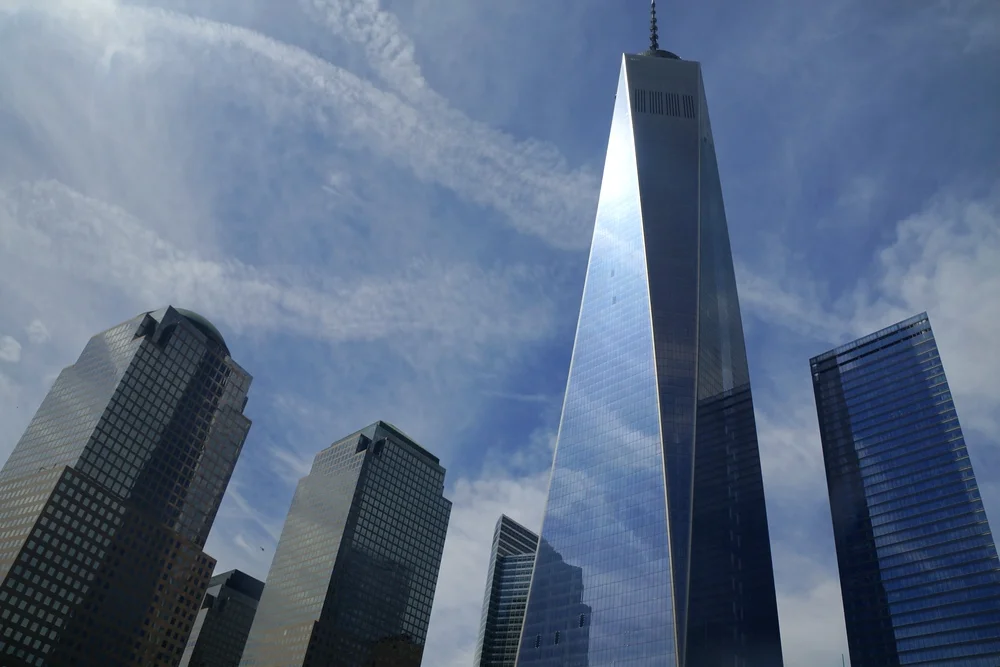
4.World Trade Center Memorial
We stopped by the National September 11 Memorial and Museum located at the World Trade Center site on the former location of the Twin Towers. The memorial remembers victims and rescuers.
The two reflecting pools, set in the footprints of the original Twin Towers, feature cascading waterfalls that create a serene and contemplative atmosphere. The names of the nearly 3,000 victims are inscribed on bronze panels surrounding the pools, allowing visitors to pay their respects in a personal and meaningful way. This solemn site offers a space for quiet reflection and a chance to honor those who were lost.
The memorial’s design, by architect Michael Arad and landscape architect Peter Walker, is both powerful and symbolic. The vastness of the reflecting pools creates a striking contrast to the bustling cityscape around it. The Survivor Tree, a Callery pear tree that survived the attacks, stands as a symbol of resilience and hope.
The World Trade Center Memorial is located at 180 Greenwich Street, New York, NY 10007. The A, C, J, Z, 2, 3, 4, 5, E, R, and W subway lines all stop at the Fulton Street Station, which is a short walk from the memorial.
Tips for Visitors
- Purchase Tickets in Advance: For the museum, purchasing tickets online in advance can save time and ensure availability.
- Join a Guided Tour: Guided tours provide deeper insights and are available for both the memorial and the museum.
- Respect the Space: Remember that this is a place of reflection and remembrance. Maintain a respectful demeanor, and be mindful of others who may be grieving or reflecting.
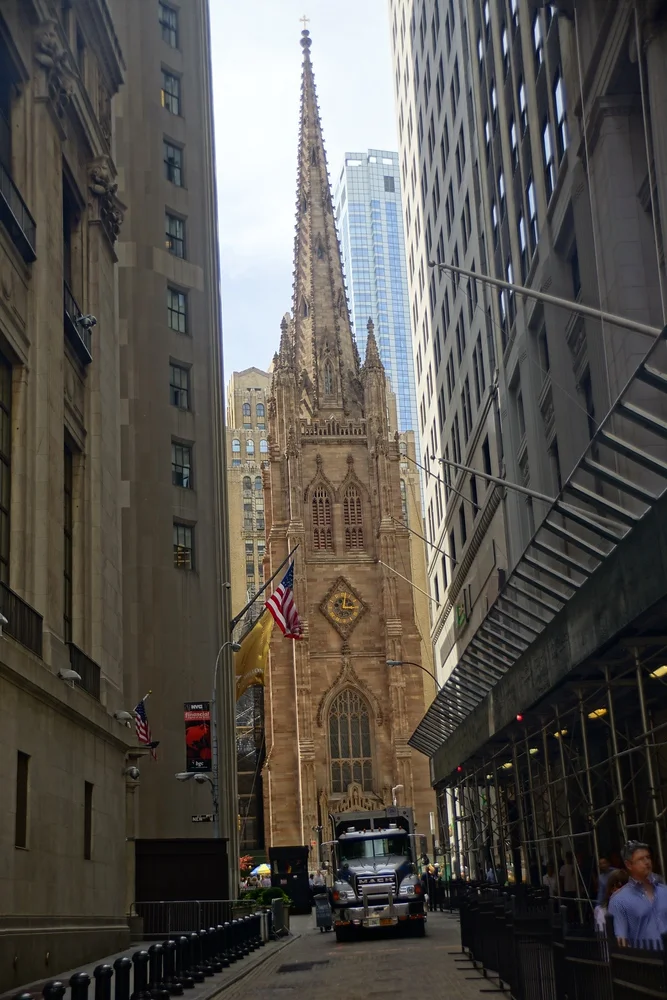
5.Trinity Church
Located at 75 Broadway in lower Manhattan, Trinity Church holds one of the oldest burial grounds in Manhattan and is the final resting place of many historic figures. This historic parish is nearby Wall street.
Trinity Church, founded in 1697, has witnessed the evolution of New York City from its colonial days to the bustling metropolis it is today. It has played a significant role in the city’s history, serving as a place of worship, a refuge, and a symbol of resilience. The church’s graveyard is the final resting place of notable figures such as Alexander Hamilton, a Founding Father of the United States, making it a must-visit for history enthusiasts.
The current structure, completed in 1846, is a masterpiece of Gothic Revival architecture. Designed by Richard Upjohn, Trinity Church features soaring spires, intricate stained glass windows, and detailed stone carvings.
Trinity Church is located at 89 Broadway, at the head of Wall Street. The 4 and 5 subway lines stop at Wall Street, just steps away from the church. The R and W lines also stop at Rector Street, which is a short walk to the church.
Tips for Visitors
- Join a Guided Tour: Guided tours are available and provide valuable insights into the church’s history, architecture, and notable figures buried in the graveyard.
- Attend an Event: Check the church’s schedule for concerts, lectures, and other events that might coincide with your visit.
- Respect the Space: Remember that Trinity Church is an active place of worship. Be respectful of services and those in prayer, and maintain a quiet and reverent demeanor.
6. Wall Street
Coming to New York City we had to visit Wall Street. This is where millions (or should I say billions) are made and lost.
It was originally the site of a literal wall built by Dutch settlers in the 17th century and has since evolved into the epicenter of global finance. Walking down Wall Street, you can almost feel the pulse of history, from the early days of trading under the Buttonwood Tree to the modern hustle and bustle of today.
Two of Wall Street’s most iconic sculptures, the Charging Bull and the Fearless Girl, add to its epic nature. The Charging Bull symbolizes the strength and resilience of the American economy, while the Fearless Girl stands as a symbol of female empowerment and equality. These sculptures have become cultural landmarks.
Wall Street is easy to reach. The 2, 3, 4, 5, J, and Z subway lines all have stops nearby. The Wall Street station is right in the heart of the Financial District.
Tips for Visitors
- Join a Walking Tour: Guided walking tours offer in-depth knowledge and can help you discover hidden gems and historical anecdotes.
- Visit the Museum of American Finance: This museum provides a comprehensive overview of the financial history of Wall Street and the broader economy.
- Respect the Area: Remember that Wall Street is a working financial district. Be mindful of those who are there for business.
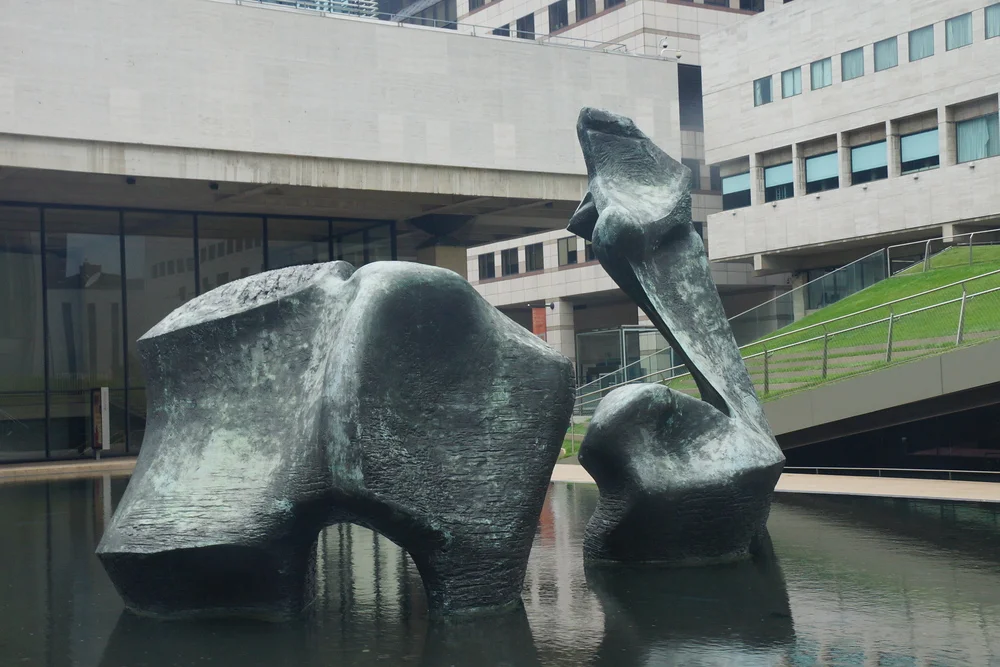
7.Lincoln Center
Lincoln Center is a space that celebrates the performing arts as it is home to the opera, the ballet and the theater. Art aficionados will love the possibilities the Lincoln Center offers.
Lincoln Center is home to some of the most prestigious performing arts organizations in the world, including the New York Philharmonic, the Metropolitan Opera, and the New York City Ballet. Attending a performance here means witnessing top-tier artistry and productions that set global standards. Whether it’s a stirring opera, a captivating ballet, or a powerful symphony, the performances at Lincoln Center are unparalleled.
The architecture of Lincoln Center is inspiring. Designed by a team of renowned architects, the complex features stunning venues such as the Metropolitan Opera House, Avery Fisher Hall (now David Geffen Hall), and the David H. Koch Theater.
Lincoln Center is located at 10 Lincoln Center Plaza, between West 62nd and 65th Streets and Columbus and Amsterdam Avenues. The 1 subway line stops at 66th Street-Lincoln Center.
Tips for Visitors
- Book Tickets in Advance: Popular performances can sell out quickly, so it’s wise to book tickets ahead of time.
- Take a Guided Tour: Guided tours provide insights into the history, architecture, and operations of Lincoln Center, enriching your visit.
- Explore the Area: The surrounding Upper West Side is home to many great restaurants, shops, and attractions, making it worth spending extra time in the area.
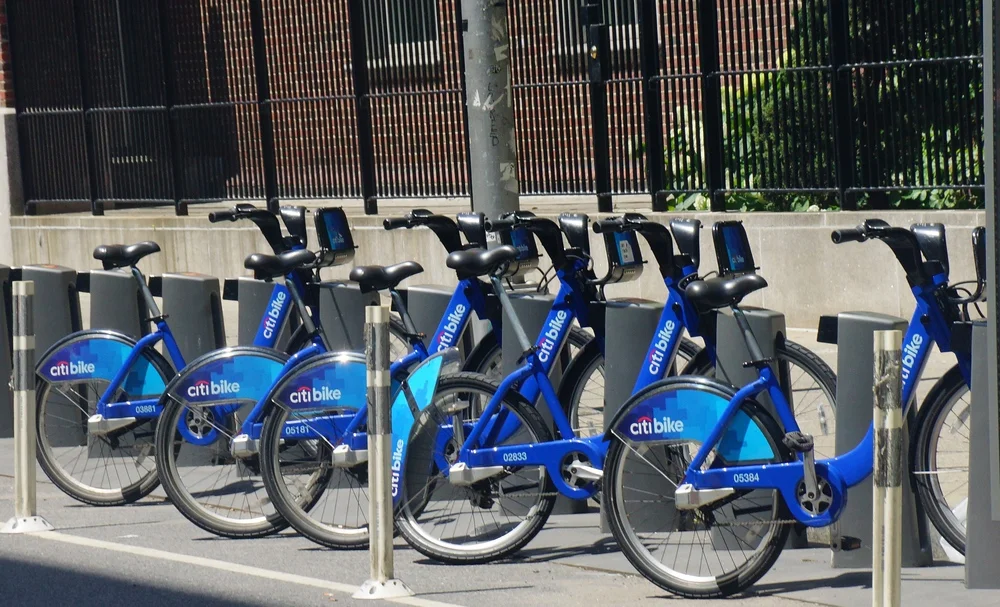
8.Ride a Bicycle
While I wouldn’t recommend biking Manhattan’s congested streets, Central Park really is a great place for a bike ride. If you’re looking to cover a lot of ground, you can pick up a bike from one of the many rental shops or the city’s Citi bike share system where you can unlock a bicycle from any station, ride wherever you want and return to any station 24/7.
Biking gives you the freedom to explore NYC at your own pace. You can weave through different neighborhoods, stop spontaneously at interesting spots, and cover more ground than you would on foot. Whether you’re cruising through Central Park or cycling along the Hudson River Greenway, the sense of freedom and adventure is unparalleled.
Safety Tips
- Wear a Helmet: Always wear a helmet for safety.
- Follow Traffic Rules: Obey traffic signals and bike lane markings.
- Be Aware of Pedestrians: Yield to pedestrians and be cautious at crosswalks.
- Stay Visible: Use lights and wear bright clothing, especially when biking at night.
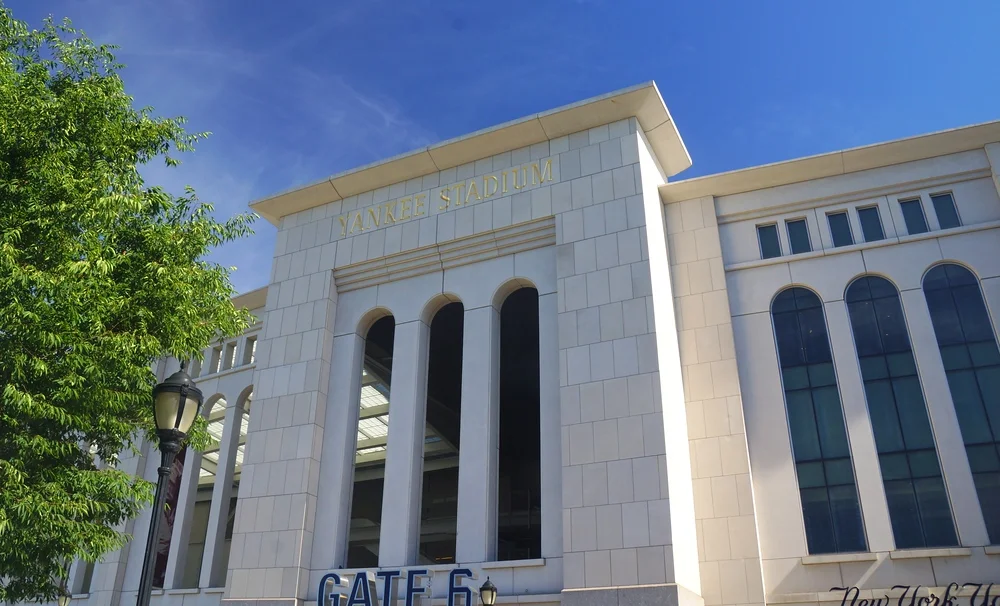
9.Watch a baseball game at Yankee Stadium
Baseball has often been referred to as New York’s game and no team in the history of Major League Baseball is more celebrated than the New York Yankees. They’ve won more World Series championships than any other team and you can watch them play live during the summer months at Yankee Stadium.
Yankee Stadium is steeped in history. The New York Yankees, one of the most successful franchises in sports history, have called this stadium home since 1923 (with a new stadium opening in 2009). Legends like Babe Ruth, Lou Gehrig, Joe DiMaggio, and Derek Jeter have graced this field. Walking into Yankee Stadium, you can almost feel the echoes of historic moments and legendary games.
The atmosphere at Yankee Stadium is electric. From the moment you arrive, the buzz of excitement is palpable. The energy of the crowd, the sounds of vendors hawking hot dogs and peanuts, and the unmistakable crack of the bat all contribute to an unforgettable experience. Whether it’s a regular-season game or a playoff showdown, the passion of Yankees fans is infectious.
Yankee Stadium is located at 1 East 161st Street in the Bronx. The 4, B, and D subway lines provide direct access to the stadium, making it convenient to reach from anywhere in the city.
Tips for Visitors
Buy Tickets in Advance: Popular games can sell out quickly, so it’s best to purchase tickets in advance through the Yankees’ official website or reputable ticket vendors.
Explore the Stadium: Arrive early to visit Monument Park, check out the Yankees Museum, and take in the sights and sounds of the stadium.
Stay Hydrated and Protected: Bring sunscreen and stay hydrated, especially during summer games. Water bottles are allowed if they are unopened and factory-sealed.
10.MET Museum (Metropolitan Museum of Art)
Even if you’re not into museums a trip to the MET (the Metropolitan Museum of Art) is highly recommended. As the largest art museum in the United States, it has a permanent collection of more than two million works. You find displays from Ancient Egypt, Byzantine and American modern art just to name a few.
Admission to the Met is by suggested donation only, meaning you can give as much (or as little) as you’d like although a recommend fee of $25 is shown at the counter.
The MET itself is a work of art. Its grand Beaux-Arts façade, designed by Richard Morris Hunt, is iconic, while the museum’s interior features stunning galleries, grand staircases, and exquisite architectural details. It is home to some of the world’s most famous and celebrated artworks. Imagine standing before Vincent van Gogh’s “Starry Night,” contemplating the delicate beauty of Vermeer’s “Young Woman with a Water Pitcher,” or marveling at the grandeur of the Temple of Dendur.
The MET is located at 1000 Fifth Avenue, between 82nd and 86th Streets. The 4, 5, and 6 subway lines stop at 86th Street, a short walk from the museum.
Tips for Visitors
- Plan Your Visit: The MET’s collection is extensive, so it’s a good idea to plan your visit in advance. Focus on a few key areas or exhibitions that interest you the most.
- Use the Map and Guide: The museum provides detailed maps and guides to help you navigate the galleries and find specific works or exhibitions.
- Take Breaks: With so much to see, it’s important to take breaks. The museum’s cafes and benches offer perfect spots to rest and recharge.
